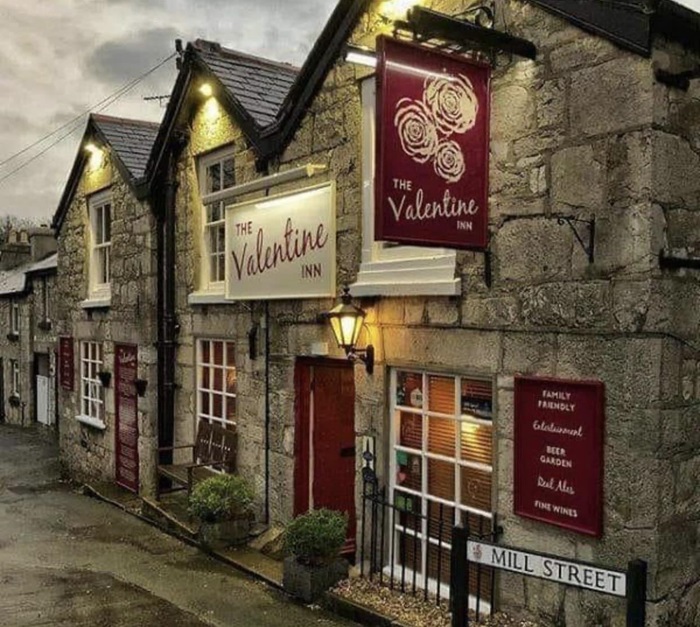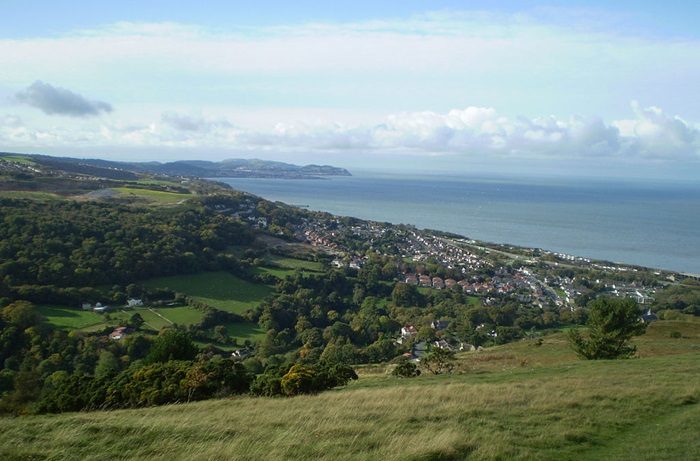The tiny Welsh village of Llanddulas is nestled between the slightly bigger villages of Old Colwyn and Abergele. It is part of the county of Conwy, in the North of Wales; around 23% of people in the town have at least some knowledge of the Welsh language.
The mainly suburban-style settlement is so small that its population in the 2011 census also included the nearby village of Rhyd y Foel, giving it the resulting population of 1,542 as of 2011.
History
Whilst there are little to no sources about the history of Llanddulas, other than its connection to the limestone industry nearby, one significant event did shake this little village. On Friday 20th December 1940, during WW2, a German aircraft crossed paths with Llanddulas and dropped two 550k parachute mines. One landed in mill pond, at the rear of mill street, and the blast destroyed part of the old pub building and several houses, including a group of houses known as the gladias.
Notable people
Notably, Llanddulas was the birthplace of Lewis Valentine. He was born on the 1st of June 1893 and became a prominent figure in Welsh politics. He formed and subsequently became the leader of Plaid Cymru in 1925, a left-wing party primarily committed to Welsh independence from England.
In the village
The quaint village consists of little more than a shop, a local pub and a village hall, typical of a small village. However, that being said there are a couple of amenities to attract tourism, including a campsite and a nearby picnic site.

The local pub – the Valentine Inn – is a real gem. The cosy red interior is lit by an old fireplace in the winter, and a pretty back garden is perfect for a pint in the summer. The pub dates back at least a couple of hundred years and was originally named the three boars heads; the pub was constructed with clay and even had a straw roof! After the old pub was partially destroyed during World War 2, the pub was renamed The Valentine and fittingly reopened on the 14th of February 1941.
The beach
Llanddulas beach is a long stretch of sand and pebbles, with a wide area of wet sand exposed only at low tide. The beach itself is not built up. It has been awarded a green coast award and its rural setting means that it is somewhat of a secluded spot, ideal for dog walking as this beach is dog friendly all year round.
This beach offers views over Colwyn Bay, and on a clear day you can even see Little Ormes Head in the distance
Sea Defence
This beach is fitted with concrete dolos, wave-dissipating structures that protect the coastline. They were installed as part of a 7-mile stretch of sea defences, from Old Colwyn to the River Clwyd, after a storm in February 1990 caused extensive flooding.
LLanddulas’ Site of Special Scientific Interest
A large Site of Special Scientific Interest (SSSI) covers the local area, including Betws yn Rhos, Rhyd-y-foel, Llysfaen and Llanddulas; SSSI is an area that has been protected for its conservation capabilities, usually because it contains threatened habitats or species.
This particular SSSI area contains the hills of Cefn-yr-Ogof and Gwrych Castle Wood.
The Hills
The village is towered over by Cefn-yr-Ogof, a 669 ft (or 204 metres) limestone hill. Aside from it being a protected area, the large hill also contains large caves presumably from previous quarrying.
Gwrych Castle Wood
Gwrych Castle Wood is part of Gwrych Castle, a privately owned estate, that stretches to the boundaries of Llanddulas. The woods are filled with wildlife, and also include a crumbling stone castle and Lady Emily’s tower.
Tan-yr-Ogof caves
Just west of the woods is the Tan-yr-Ogof caves, a great place to explore and also popular with rock climbers due to the steep cliffside. Although the cliff is fairly visible from the coastline, the path leading to the cliffs is not easy to find.
Walks in the area
Cefn-yr-Ogof, Gwrych castle wood and the Tan-yr-Ogof caves are all great places to explore. Alternatively, there are many beautiful walks in and around Llanddulas.
The national cycle route 5 is a cycle path that runs close to the Llanddulas seafront. This 34-mile-long section is accessible for pedestrians and cyclists alike and offers great views of the North Wales coastline. Next to this cycle path is the Llanddulas Coastal Path, another great spot to take a leisurely stroll along the seafront, from Old Colwyn to the edge of Abergele.
The Colwyn Bay-Llanddulas-Llysfaen circular is a popular countryside walk around the village. A 14km moderately hard walk, this circular route takes around 4 to 5 hours to complete and offers pretty views over Llanddulas. The route follows a pretty stream through Fairy Glen at one point and joins the North Wales Path at another. The North Wales Path is a 60-mile route popular with more dedicated hikers.
The Mynydd Marian is a small limestone ridge that provides incredible views of the coastline; the ridge is only 1.2 miles away from the centre of Llanddulas and worth hiking up to.
Myths in the area
A local myth, dating back years, details a cave on the side of the local mountain Pen y Cefn being the abode of the Devil. It is said that the people of Llanddulas came together, marched to the cave and performed an exorcism to rid the devil.
Llanddulas is a quaint village, filled with beautiful nature and a pretty coastline.
Photo: Mattcymru2 at English Wikipedia, CC BY-SA 3.0, via Wikimedia Commons

